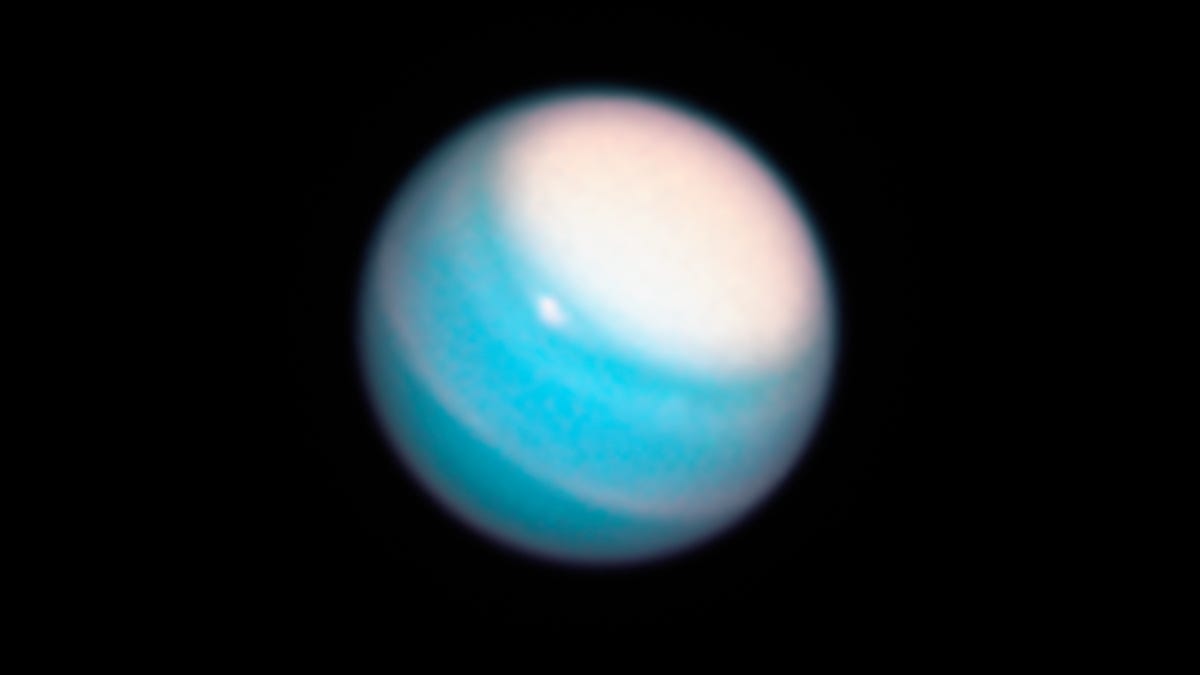NASA: You're about to get a rare chance to spot elusive planet Uranus
Uranus is usually faint, but the moon and Mars will help guide your eyes on Jan. 20.

Hubble image of Uranus revealing a cloud cap on the north pole.
Jokes aside, Uranus isn't known as one of the most glamorous planets, but it's an underappreciated gem. The ice giant has a lovely blue color and sneaky rings. While our eyes are often drawn to brighter planets like Mars and Jupiter in the night sky, Jan. 20 will give us a decent shot at spotting elusive Uranus.
You'll need binoculars or a telescope to aid in your hunt for Uranus, but NASA says Jan. 20 represents an "easy opportunity" to spot it.
NASA's What's Up skywatching tips for January includes an explainer on how to locate the planet.
Wait for the sun to go down and then look for the crescent moon a couple of hours after dark. From the moon, look up and find Mars, which has a reddish-orange glow. "Scan your way over from Mars toward the moon, and you should be able to find the faint, bluish disk of Uranus," NASA says.
You'll need binoculars, but this NASA graphic shows where to look to Uranus relative to the moon and Mars on Jan. 20.
While you're gazing into the blue of Uranus, be thankful you're at a far distance from the planet. As it turns out, it smells like farts and rotten eggs thanks to hydrogen sulfide gas in its clouds. But don't put up a stink. Grab your binoculars and enjoy this celestial treat.
Follow CNET's 2021 Space Calendar to stay up to date with all the latest space news this year. You can even add it to your own Google Calendar .

